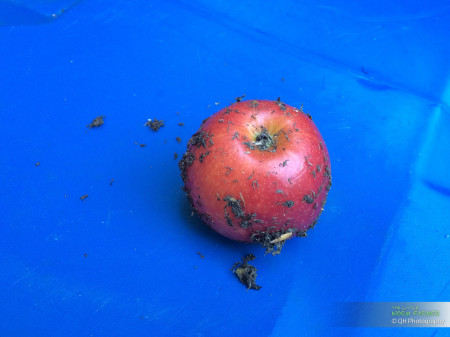Blog: My Journey in Worm Farming
-
Homemade worm farm and compost conditioner
Posted in A day in a worm farm on Oct 13, 2016
I'm making my own worm farm / compost conditioner. I have once been given a bottle of Tumbleweed conditioner. It is easy to guess what the ingredients are:
- "Specially selected blend of natural minerals", some kind of rock dust. From the colour of their product I'm guessing it is the Zeolite that is produced in Australia
- "Balances pH levels in your worm farm and Compost Bin", that would be Calcium Carbonate, so garden lime would do
- "Neutralises acidity", same as above
- "Helps worms digest larger quantities of food waste", something that can be used as grit for the worm gizzard: rock dust and ga...
-
It's Spring, lets getting the garden ready
Posted in A day in a worm farm on Oct 09, 2016
We are well into Spring here in Australia (NSW) and like any gardener this is an exciting time. Eventhough you can still grow veggies in our winter I usually let my garden take a rest to give time to the organic matter I added in the garden beds to break down into rich nutrients and breed beneficial organisms, it is usually time for me to go fishing for Blackfish (Luderick).
So this year, I have decided I want to focus on my soil and feed the micro-organisms that call it home. So the plan is to augment a commercial organic potting mix for three new garden beds:
- add some dirt
- add a balanced am...
-
ENC breeding experiment take 2
Posted in A day in a worm farm on Sep 05, 2016
Even if I classify last ENC breeding experiment as a success, there were couple of aspects that were a failure, mainly the way I prepared the bedding/food mix in the non-manure trays. To me this invalidates the results of the experiment which was to compare horse manure to food scraps with various bedding material. The second, less critical, aspects was bedding temperature, although it was indoors, doing this during winter time wasn't a great idea.
So with spring coming, I think I will take a second shot at this experiment with some changes.
With the new experiment I will be using only two tra...
-
The Worm Farming Revolution book
Posted in A day in a worm farm on Jul 19, 2016
There are quite a few books about worm farming out there. A lot of them talk about the same thing, but how reliable is the information in those books?
When I first started with worm farming, I read through a lot of online articles and started to apply various tips and advice only to find out later on that they were the reasons of some luckily non-critical issues. Things such as watering your worm bin weekly and use the so-called worm tea which is actually leachate. Those tips are very popular and can actually work a treat, however they have the potential to be fatal.
Watering your worm bin on ...
-
What's inside the apple?
Posted in A day in a worm farm on Jul 02, 2016
On the 12th of May 2016, I started my second experiment to assess how fast my horizontal migration bin is consuming the food scraps. Among the scrap I gave on that day there was... an apple. While everything but corn cobs have totally disappear, this apple is still 99.99% intact to this day! It is almost two months and here is how that apple looked like this morning.

Wax? Chemical? What ever that is it is surprising that after one and a half month burried inside casting and bedding in the worm bin this apple looks almost as fresh as when we bought it from the supermarket.
Because there was a ...
-
Gargantua update June 2016
Posted in Gargantua the CFT worm bin on Jun 22, 2016
Gargantua started operating on March 15th 2016, this is now over 3 months. I'm more than happy with it and the worm population has exploded. There is a good mix of Blue Indians and Red Wigglers but I added a few European Nightcrawlers and Cod Worms (Alabama Jumpers) to see how they would do.
A large worm bin is so much easier to maintain than several smaller bins or even a single bin. You worry less about what food and the quantity because once it is at or near full speed (max worm population) the worms will eat a lot and the large amount of bedding is giving them space to retreat to if anythi...